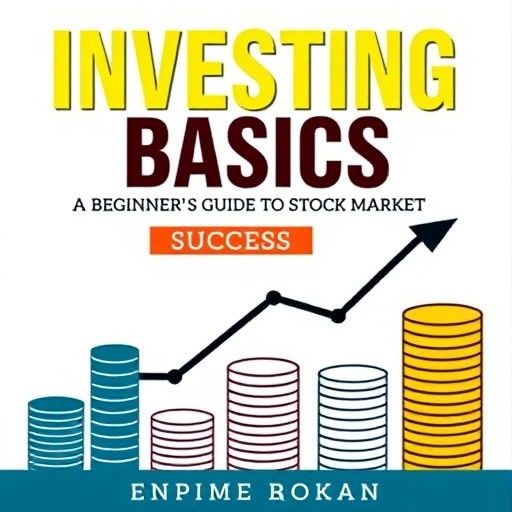
Investing Basics: A Beginner’s Guide to Stock Market Success Rules
Welcome to the thrilling world of investing! If you’ve ever daydreamed about becoming a millionaire or just wanted to grow your hard-earned cash, you’ve stumbled upon the right guide. Stock market investing can initially seem like a complex puzzle—a labyrinth of stocks, brokers, and market conditions—but fear not! This beginner’s guide is here to unravel the mystery and set you on the path to successful investing. So, buckle up and let’s dive into the basics of investing in stocks!
What Are the Rules for Successful Stock Investing?
Understanding the Stock Market Basics
The stock market is a vast ocean, and each stock is a fish swimming within it. To become a successful investor, you’ll need to learn how to navigate these waters. Stocks represent shares of ownership in a company, and when you invest in stocks, you’re essentially buying a piece of that company. But remember, not all fish are created equal! Some stocks may swim gracefully, generating profit, while others may flounder. Understanding the stock market basics means grasping how market conditions, economic factors, and company performances affect stock prices. It’s all about learning how to read the waves!
Key Rules Every Beginner Investor Should Know
Now that you have a basic overview, let’s discuss the essential rules for successful stock investing. First, you’ll need to understand that investing is a marathon, not a sprint. This means patience is key—don’t let market volatility shake your discipline. Second, never invest money you can’t afford to lose; the stock market can be unpredictable, and while many investors dream of hitting the jackpot, it’s crucial to manage your risk. Lastly, always have a clear investment strategy. Whether you’re day trading or adopting a long-term approach, having a plan will help guide your decisions and keep your emotions in check.
Building a Solid Investment Strategy
Your investment strategy is your personal roadmap to financial success. It outlines how you’ll buy and sell stocks, what assets you’ll include in your portfolio, and how you’ll react to market fluctuations. Consider factors such as your risk tolerance, financial goals, and the time you can commit to monitoring your investments. For beginners, a strategy that blends low-cost index funds with a few individual stocks might be ideal as it offers diversification while still allowing you to learn the ropes of stock investing. Remember, a well-structured strategy is the foundation of a successful investment portfolio!
How to Start Investing in the Stock Market as a Beginner?
Choosing the Right Broker for Your Investment Journey
Now that you’re armed with knowledge, it’s time to start investing! The first step is choosing a broker. A broker acts as your gateway to the stock market, facilitating your trades and offering insights into investment opportunities. Consider factors such as fees, services, and the user interface of their trading platform. Many brokers offer educational resources, which could be invaluable for beginners eager to learn how to invest. Remember, a great broker should feel like your investing guru, guiding you through the tumultuous waters of stock trading.
Starting Small: Tips for Beginner Investors
As the saying goes, you have to crawl before you can walk, and this applies to investing as well. Starting small is a smart move for beginner investors. You don’t need to invest a fortune to dip your toes into the stock market. With the advent of fractional shares and low-cost ETFs, you can invest in high-value stocks without the need for much money upfront. Allocate a small portion of your income to your investment portfolio and gradually increase it as you gain confidence. This strategy allows you to learn the ropes without putting your entire financial future at risk!
Creating Your First Investment Portfolio
Creating your first investment portfolio is akin to assembling a fine collection of art pieces. You want a mix of different styles and genres—this is where diversification comes into play. A well-diversified portfolio should include a blend of stocks, bonds, and possibly a few mutual funds or ETFs. Consider including large-cap and small-cap stocks, international shares, and even some penny stocks for a bit of excitement! The key is to evaluate each asset carefully and ensure they align with your investment strategy. In time, your investment portfolio will not only grow but also reflect your unique investing personality!
Why Is Diversification Important in Stock Investing?
Evaluating Different Asset Classes for Diversification
Diversification is the name of the game when it comes to successful investing. Imagine putting all your eggs in one basket; if that basket falls, you’re toast! By diversifying your investments across different asset classes—like stocks, bonds, and real estate—you can mitigate risks. Evaluating various asset classes will help you understand how they react to market conditions. For instance, while stocks may soar during a bull market, bonds may offer stability during downturns. This blend of assets ensures that your portfolio remains resilient, no matter the weather!
How to Effectively Diversify Your Investment Portfolio
To effectively diversify, consider allocating your investments not just across different asset classes but also within them. For example, within your stock investments, choose shares from various sectors such as technology, healthcare, and consumer goods. This way, if one sector faces challenges, the others can balance your portfolio. You might also explore international investments to broaden your horizons. Remember, the goal of diversification is not just to spread your investments but to ensure they work together to generate optimal returns.
Common Mistakes in Diversifying Investments
Even seasoned investors can fall prey to common diversification pitfalls. One mistake many make is over-diversifying—spreading themselves too thin by investing in too many assets, which can dilute potential returns. Another common error is failing to regularly review and adjust your portfolio. Market conditions change, and your investment strategy should evolve accordingly. Make it a habit to assess your portfolio periodically, ensuring it aligns with your financial goals and risk tolerance. Remember, smart diversification is about quality over quantity!
What Strategies Can Help Maximize Investment Returns?
Long-Term vs. Short-Term Investment Strategies
When it comes to maximizing investment returns, the strategy you choose matters significantly. Long-term investing involves buying and holding assets for several years, allowing you to benefit from compound growth and market trends. This strategy often yields better returns as you ride out market volatility. On the flip side, short-term strategies, such as day trading, seek quick profits through frequent buying and selling. While they can be profitable, they require discipline and a keen understanding of market movements. Choose the strategy that aligns with your personality and financial goals!
Understanding Market Volatility and Its Impact
Market volatility is the stock market’s version of a roller coaster ride—full of ups and downs that can make your stomach churn. Understanding how volatility impacts your investments is crucial for any investor. During turbulent times, it’s easy to panic and sell at a loss, but remember that volatility can also present opportunities to buy undervalued stocks. Staying informed about market trends and maintaining a level head will help you make decisions that enhance your investment returns, even in choppy waters!
Using Trends to Inform Your Investment Strategy
Trends can be your best friend when it comes to investing. By paying attention to market trends, you can identify potentially lucrative investment opportunities. Whether it’s the rise of electric vehicles or the increasing demand for renewable energy, staying ahead of trends can give you an edge. However, it’s essential to differentiate between a fad and a sustainable trend. Conduct thorough research and analysis to ensure you’re making informed decisions based on solid data rather than following the crowd blindly.
How to Evaluate Investment Opportunities in the Stock Market?
Rating Stocks: What Beginners Should Look For
Evaluating investment opportunities requires a keen eye and a bit of analytical prowess. As a beginner, look for specific indicators when rating stocks. Financial health, growth potential, and market position are vital factors. Tools like price-to-earnings (P/E) ratios, earnings per share (EPS), and market capitalization can provide insight into a stock’s potential. Additionally, consider the company’s management, industry trends, and economic forecasts. The more you learn to evaluate these metrics, the better equipped you’ll be to make informed investment decisions.
Identifying High-Potential Growth Stocks
High-potential growth stocks are the golden nuggets of the stock market—stocks that are expected to grow at an above-average rate compared to their peers. To identify these diamonds in the rough, research companies with strong earnings growth, innovative products, and a solid business model. Keep an eye on upcoming trends and sectors poised for expansion; this foresight can help you spot promising stocks early on. And remember, while these stocks might carry higher risks, they also offer the potential for substantial returns if you play your cards right!
Analyzing Mutual Funds vs. Individual Stocks
When it comes to building your investment portfolio, you’ll face the choice between mutual funds and individual stocks. Mutual funds pool money from many investors to purchase a diversified portfolio of stocks and bonds, which can be a great way for beginners to achieve diversification without the hassle of managing each investment. On the other hand, investing in individual stocks allows for greater control and the opportunity to select specific companies you believe in. Weigh the pros and cons of both options based on your risk tolerance, investment goals, and willingness to engage in active management.
Q: What is the best way for a beginner trader to learn the basics of investing in the stock market?
A: A great book on investing basics can provide valuable insights. Additionally, taking time to study exchange-traded funds and understanding specific stocks can help you learn the fundamentals more effectively.
Q: How can I start investing if I don’t have enough money to buy individual securities?
A: You could buy shares of exchange-traded funds or mutual funds, which allow you to invest small amounts of money across a diversified portfolio, reducing the risk associated with individual securities.
Q: What are some best investment strategies for beginners?
A: Some of the best investment strategies for beginners include dollar-cost averaging, where you invest small amounts at regular intervals, and focusing on long-term goals to achieve financial freedom.
Q: How can a trader reduce the risk when investing in the financial markets?
A: To reduce the risk, traders can diversify their portfolios, invest in low-cost index funds, and avoid making impulsive decisions based on market fluctuations.
Q: What does the term ‘bull market’ mean in the context of investing?
A: A bull market refers to a period when prices in the financial markets are rising or are expected to rise. This can create a favorable environment for sellers and traders looking to profit.
Q: Is it wise to invest in a Roth IRA for long-term financial goals?
A: Yes, investing in a Roth IRA can be a smart choice for long-term financial goals as it allows your investments to grow tax-free, providing you with cash flow in retirement.
Q: Can making mistakes in trading be beneficial for a beginner?
A: Yes, making mistakes can be a valuable learning experience for a beginner trader. It helps to identify areas where you may need to learn the basics and improve your investment strategies.
Q: What should I consider when selecting specific stocks to invest in?
A: When selecting specific stocks, consider the company’s financial health, market position, and growth potential. It’s essential to conduct thorough research and analysis before making any investment decisions.
Q: How can I achieve financial freedom through investing?
A: Achieving financial freedom through investing involves setting clear long-term goals, consistently investing in diverse securities, and being patient as your investments grow over time.
Q: What is the significance of cash flow in stock market investing?
A: Cash flow is crucial as it represents the money generated from investments. Understanding cash flow can help you assess the profitability of securities and make informed investment choices.




